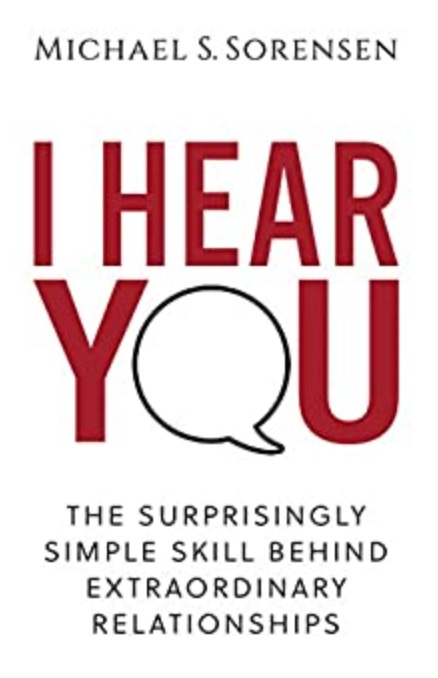
I want to do a summary in this post of a book that I found really helpful. The book is titled “I Hear You” and it highlights the impact of emotional validation on everyday relationships. I found it really helpful and it goes under the umbrella of skills that I wish I learned long ago. Here’s the summary:
“I Hear You” is a powerful and insightful book that delves into the art of effective communication in personal and professional relationships. The author, Michael S. Sorensen, presents a practical guide to improving one’s listening and communication skills, focusing on the importance of validation as a key ingredient for fostering healthy connections.
The book is divided into three sections: the principles of validation, understanding the power of validation, and applying validation in various situations. Through engaging anecdotes and relatable examples, Sorensen demonstrates the transformative impact of validation in relationships and its potential to create a more empathetic and supportive environment for all parties involved.
One compelling story that illustrates the power of validation involves a husband and wife experiencing tension in their marriage. The wife, Sarah, often felt unheard and dismissed by her husband, Mark, which led to growing resentment and emotional distance. In a pivotal conversation, Mark decided to apply the principles of validation he had learned from “I Hear You.” Instead of minimizing Sarah’s feelings or offering advice, he listened actively and empathized with her struggles. He acknowledged her emotions and validated her perspective, which allowed Sarah to feel heard, understood, and supported. This simple act of validation became a turning point in their relationship, leading to more open communication and a stronger emotional connection.
Actionable Insights:
- Practice Validation: To improve communication in any relationship, one must first learn to validate the feelings and experiences of the other person. Validation is the act of acknowledging, empathizing, and supporting someone’s emotions, regardless of whether you agree with them. Practice validation by listening actively, suspending judgment, and responding empathetically to others’ feelings.
- Avoid Common Validation Mistakes: Sorensen highlights several common validation mistakes that people make, including offering advice or solutions too quickly, minimizing someone’s feelings, or changing the subject. Be aware of these tendencies and make a conscious effort to avoid them in conversations. Instead, focus on genuinely understanding and empathizing with the other person’s perspective.
- Apply Validation in Different Contexts: “I Hear You” provides guidance on how to apply validation in various situations, such as dealing with criticism, navigating difficult conversations, and providing support during times of grief or distress. Remember that validation is a versatile tool that can be adapted to different contexts and relationships, both personal and professional.
By practicing the art of validation, readers of “I Hear You” will learn to create more meaningful connections, foster empathy and understanding, and improve their overall communication skills. The compelling story of Sarah and Mark serves as a powerful example of how a simple shift in communication can transform a relationship and bring two people closer together.

Arya Salehi is a storyteller and life coach, helping people enhance their learning and fulfillment at work and in relationships. He believes in asking the right questions, rather than having all the answers. He lives in Roseville, CA.
